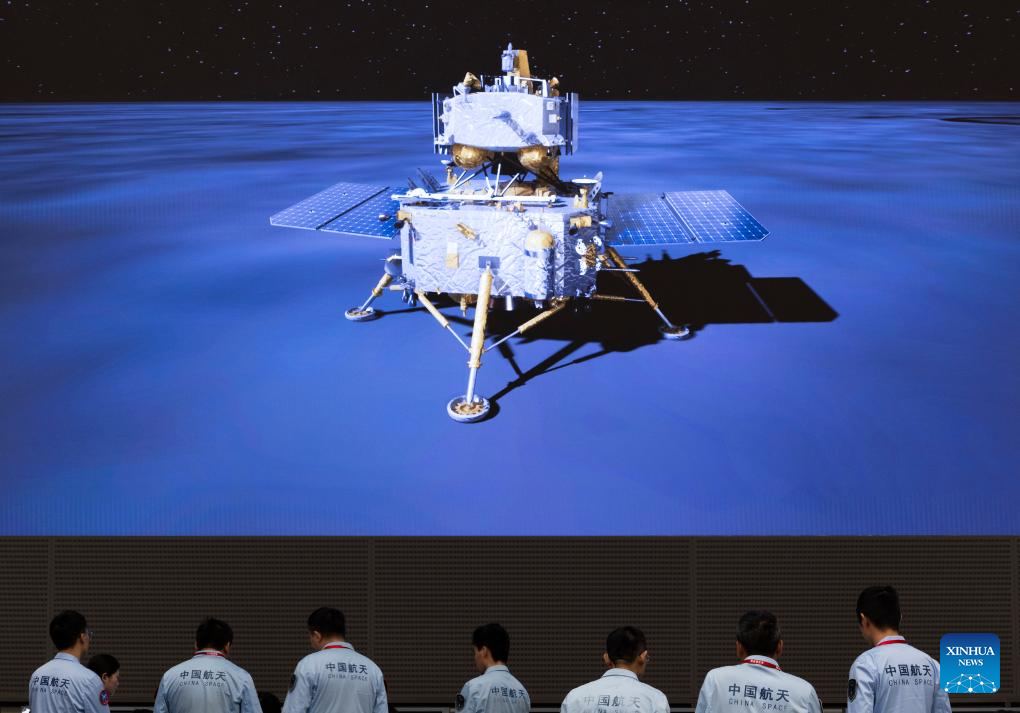Because the return of the Chang’e 6 mission from the far side of the Moon is crucial

The successful moon landing of the Chinese Chang'e-6 probe in the South Pole-Aitken basin has been confirmed with the aim of bringing samples from the far side of the moon back to Earth for the first time. With this mission, China aims to strengthen its status as a space power in the new global race to the Moon
China lands on the far side of the Moon again.
On Sunday morning (6:23 am Beijing time), the Chang'e-6 probe landed in the South Pole-Aitken basin, where it will begin collecting samples from the lunar surface, the China National Space Administration announced.
If all goes as planned, the mission, which began May 3 and is expected to last 53 days, could be a key milestone in China's push to become a dominant space power, CNN reports.
The landing marks the second time a mission has successfully reached the far side of the moon. China first completed this historic feat in 2019 with its Chang'e-4 probe. But Chang'e-6 represents China's most complex robotic lunar mission to date, as it aims to bring samples from the moon's far side back to Earth for the first time. Missions on the far side of our satellite are more difficult because it is not facing Earth, and requires a relay satellite to maintain communications (the Queqiao-2 launched in March). The terrain is also rougher, with fewer flat areas to land on.
All the details.
SUCCESSFUL MOON LANDING
Chang'e-6 landed inside an impact crater known as Apollo Basin, located within the sprawling South Pole-Aitken Basin about 2,500 kilometers in diameter, according to Chinese state media Xinhua.
Professor Martin Barstow of the University of Leicester told the Guardian that the feat was a great technical success for China's space programme. “Landing on the moon is difficult, but doing it on the far side, where communications are particularly difficult, is a huge technical achievement,” said Barstow, former president of the Royal Astronomical Society.
THE OBJECTIVE OF THE CHANG'E-6 MISSION
China's Chang'e-6 lunar probe appears poised to begin its historic journey back to Earth from the far side of the Moon after collecting samples that scientists believe will help answer key questions about the early evolution of the solar system.
The probe is scheduled to spend two days on the far side of the moon and 14 hours to collect lunar soil samples, Xinhua reported. To complete its mission, the lander will have to robotically stow those samples into an ascent vehicle that landed with it.
The ascent vehicle will then return to lunar orbit, where it will dock and transfer the samples into a reentry capsule, according to mission information provided by the China National Space Administration. The return to Earth is expected around June 25th.
THE MOON AN AMBITIOUS OBJECTIVE
Many countries are expanding their lunar programs, with an increasing focus on securing access to resources and further deep space exploration.
Last year, India landed a spacecraft on the moon for the first time, while Russia's first lunar landing mission in decades ended in failure when its Luna 25 probe crashed on the lunar surface .
In January, Japan became the fifth country to land a spacecraft on the moon, although its Moon Sniper lander suffered power problems due to an incorrect landing angle. The following month, the Nova-C lander, renamed Odysseus and built by the Texas-based company Intuitive Machines with funding from NASA , landed on the lunar surface. It was the first moon landing by a U.S. spacecraft since the Surveyor 7 spacecraft in 1968 and since Apollo 17's “Challenger” lunar module carried two astronauts to its surface on December 11, 1972, as well as being the first by a non-governmental entity. The success came a month after the failure of a previous US mission of the same type, Astrobotic's Peregrine.
But it's not just probes that are en route to the Moon, Reuters recalls: the United States is planning a manned mission by 2026, while China aims to launch one by 2030. The latter is also planning to create a inhabited lunar base.
This is a machine translation from Italian language of a post published on Start Magazine at the URL https://www.startmag.it/innovazione/perche-e-cruciale-il-rientro-della-missione-change-6-dal-lato-nascosto-della-luna/ on Tue, 04 Jun 2024 05:05:56 +0000.
